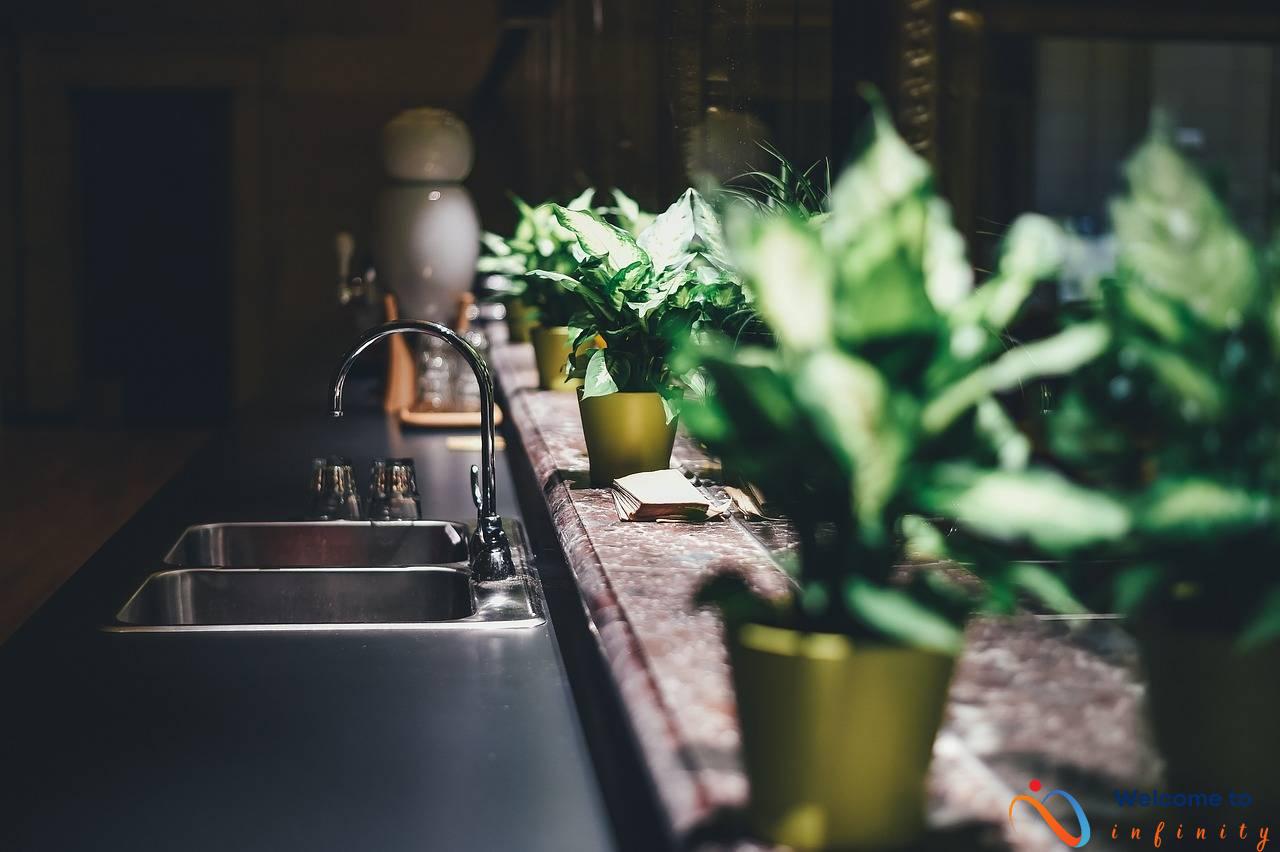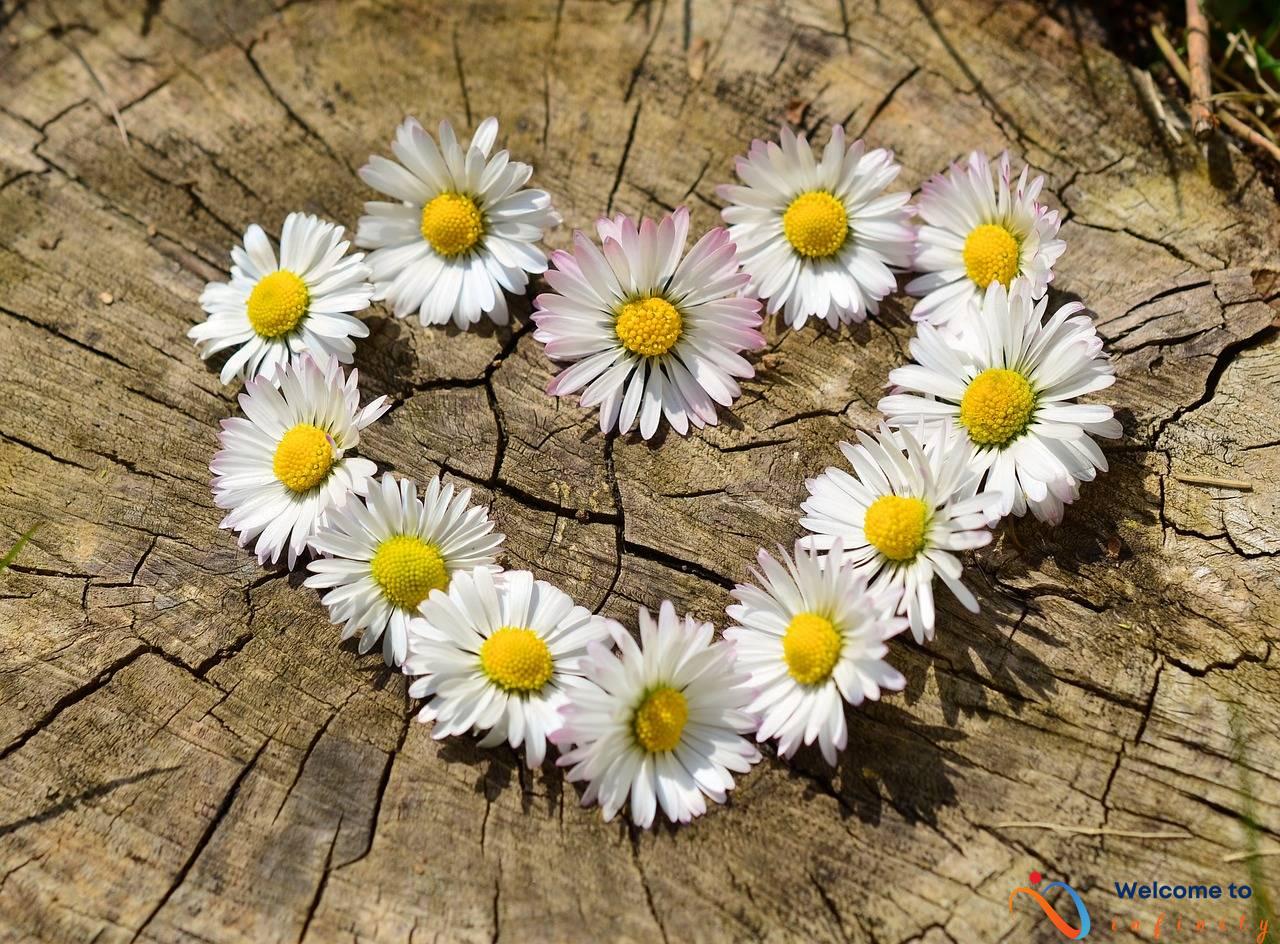Are you tired of spending a fortune on skincare products that promise the world, but fail to deliver? If so, it's time to take matters into your own hands and create a DIY skincare routine using natural ingredients. Not only is this a cost-effective solution, but it also allows you to personalize your skincare routine to meet your unique needs and preferences.
The first step in creating your own skincare routine is to determine your skin type. This will guide you in selecting the best ingredients for your skin and achieving the best results. Once you know your skin type, it's time to gather your ingredients and get started!
Some of the best natural ingredients for skincare include carrier oils and essential oils. Carrier oils, such as jojoba, coconut, and argan oil, are rich in fatty acids and vitamins that nourish and hydrate the skin. Essential oils, such as lavender, tea tree, and chamomile, have various benefits, including reducing inflammation and boosting collagen production.
When using carrier oils, it's important to create a blend that balances nourishing and hydrating effects for all skin types. For essential oils, you can mix them to create a unique blend that meets your skincare needs and preferences. These natural ingredients can help moisturize, soothe, and heal your skin, leaving it healthy and glowing.
With your natural ingredients in hand, it's time to develop a DIY skincare routine. This should include a daily cleansing routine, toning and hydrating, and moisturizing and protecting your skin. With a little effort and creativity, you can achieve a beautiful, nourished complexion from the comfort of your own home.
Determine Your Skin Type
Before creating a personalized skincare routine, it's essential to determine your skin type. This helps you select the right ingredients for your skincare routine and achieve the best results. The four main skin types are oily, dry, combination, and sensitive.
One way to determine your skin type is to observe your skin's natural tendencies. Oily skin tends to produce excess sebum and appear shiny, especially in the T-zone. Dry skin may feel tight, flaky, and rough, and often lacks moisture. Combination skin has both oily and dry areas, such as an oily T-zone and dry cheeks. Sensitive skin is easily irritated and may react to certain products or ingredients.
You can also perform a simple test to determine your skin type. Wash your face with a mild cleanser and pat dry. After an hour, observe your skin's condition. Oily skin will have a noticeable shine, while dry skin may feel tight and exhibit flakiness. Combination skin may have oiliness in the T-zone and dryness in other areas. Sensitive skin may show signs of redness or irritation.
Once you have determined your skin type, you can select the right ingredients for your skincare routine. Oily skin benefits from ingredients that balance oils and provide hydration, such as jojoba oil and aloe vera. Dry skin requires ingredients that moisturize and soothe, such as coconut oil and honey. Combination skin needs a balance of oily and hydrating ingredients, such as argan oil and green tea. Sensitive skin requires gentle, calming ingredients, such as chamomile and oatmeal.
Using the right ingredients for your skin type is essential for achieving healthy, nourished skin. Take the time to determine your skin type and customize your DIY skincare routine for the best results.
Gather Your Ingredients
Creating a DIY skincare routine can be fun and rewarding, especially when you use natural ingredients that are tailored to your skin type. Here are some of the best ingredients to gather for a personalized skincare experience:
Carrier oils are derived from plants and are rich in fatty acids, making them great for hydrating and nourishing the skin. Some popular carrier oils include:
- Jojoba oil – great for all skin types, especially oily and acne-prone
- Coconut oil – helps moisturize and soothe dry, irritated skin
- Argan oil – rich in antioxidants and vitamin E, great for anti-aging
You can experiment with mixing these carrier oils to create a blend that suits your skin's needs. For example, combining jojoba oil and coconut oil can provide a balance of hydration and soothing effects.
Essential oils are known for their aromatherapy benefits, but they can also benefit the skin in different ways. Here are some essential oils to include in your skincare routine:
- Lavender oil – helps soothe and calm the skin, great for sensitive skin
- Tea tree oil – has anti-inflammatory properties and can help fight acne
- Chamomile oil – great for soothing irritated skin and reducing redness
You can create your own custom blend of essential oils, depending on what your skin needs. For example, combining tea tree oil and chamomile oil can help reduce inflammation and redness in acne-prone skin.
By gathering these natural ingredients and mixing them together, you can create your own personalized skincare products that are tailored to your skin type and concerns. Not only is this a cost-effective way to care for your skin, but it also ensures that you know exactly what ingredients you are putting on your skin.
Ingredient 1: Carrier Oils
If you want to pamper your skin with a natural skincare routine, carrier oils are a must-have ingredient. Some of the most commonly used carrier oils include jojoba, coconut, and argan oil.
- Jojoba oil: This oil is great for all skin types, including oily and acne-prone skin. It helps regulate oil production, unclog pores, and hydrate the skin.
- Coconut oil: This oil is perfect for dry and sensitive skin. It has anti-inflammatory properties that can soothe and nourish the skin, leaving it soft and supple.
- Argan oil: This oil is rich in antioxidants and essential fatty acids that help repair and protect the skin. It is a great choice for mature skin or anyone looking to reduce the appearance of fine lines and wrinkles.
Carrier oils are versatile and can be used in a variety of ways in your skincare routine. Here are a few examples:
- As a cleanser: Massage a few drops of your chosen carrier oil onto your face to dissolve makeup, dirt, and impurities.
- As a moisturizer: Apply a small amount of oil to your face after cleansing to hydrate and nourish the skin.
- As a facial serum: Combine a few drops of your chosen carrier oil with essential oils and apply to your face for added benefits.
When using carrier oils in your skincare routine, it's important to choose high-quality, organic oils and to patch test before use to avoid any potential allergic reactions. With the right carrier oil and a little bit of experimentation, you can create a personalized skincare routine that leaves your skin looking and feeling its best.
Blend Your Carrier Oils
If you have dry and dehydrated skin, jojoba oil is a carrier oil that is perfect for you. It nourishes and moisturizes the skin, giving it a healthy glow. For oily skin, grapeseed oil is an excellent option as it regulates oil production and has astringent properties. Argan oil is ideal for those with combination skin as it balances the skin's hydration levels.
To blend your carrier oils, you need to consider the fatty acid profile of each oil. Fatty acids determine the absorption rate of the oil, and blending them creates a balance of nutrients that cater to various skin needs. A good rule of thumb is to mix carrier oils with different fatty acids. For example, mixing jojoba oil with avocado oil would create a blend that combines the nourishing effects of both oils for dry skin types.
Before blending, make sure to use high-quality carrier oils and sterilize your tools. Begin by adding equal parts of your preferred carrier oils into a dark glass bottle. Close the bottle and shake vigorously to ensure the oils blend well. You can add a few drops of essential oils, such as lavender or chamomile, to give your carrier oil blend a pleasant scent.
You can also mix different carrier oil blends to suit your skin's hydration levels throughout the year. For example, in winter, you can add more nourishing carrier oils to avoid dry, flaky skin, while in summer, you can add lighter carrier oils that won't clog your pores. Remember to label your blended carrier oils to avoid confusion.
- Identify your skin type to select the right carrier oils
- Blend carrier oils with different fatty acid profiles to create a balance of nourishing and hydrating effects
- Mix essential oils to add a pleasant aroma to your carrier oils
- Adjust your carrier oil blends to your skin's hydration levels throughout the year
The beauty of a DIY skincare routine is that you can customize your products to suit your skin's unique needs. By blending your carrier oils, you can create a nourishing and hydrating skincare routine that protects and revitalizes your skin, leaving it healthy and glowing.
Benefits of Carrier Oils on the Skin
Carrier oils are an essential component of any DIY skincare routine as they provide numerous benefits to the skin. These oils are derived from plants and used as a base or carrier for essential oils. They are rich in vitamins, essential fatty acids, and antioxidants that help moisturize and nourish the skin, leaving it healthy and glowing.
- Moisturize: Carrier oils penetrate deep into the skin, hydrating and replenishing it. They help regulate the production of sebum and provide a protective barrier, preventing moisture loss.
- Soothe: Carrier oils have anti-inflammatory properties that help soothe irritated, inflamed skin. Some oils like chamomile and calendula have a calming effect on the skin, reducing redness and irritation.
- Heal: Carrier oils have healing properties that help repair damaged skin. They contain antioxidants that protect the skin from free radical damage, promote cell regeneration, and reduce the signs of aging.
- Balancing: Carrier oils can help balance the skin's pH level, promoting a healthy complexion. They are suitable for all skin types, including oily, dry, and sensitive skin.
Some of the best carrier oils for the skin include jojoba oil, coconut oil, argan oil, and sweet almond oil. These oils are gentle on the skin, easily absorbed, and have a long shelf life. You can blend carrier oils to create a unique blend that meets your skin's needs or use them alone as a natural, nourishing moisturizer.
Ingredient 2: Essential Oils
Using essential oils in your DIY skin care routine can be very beneficial for your skin. Essential oils such as lavender, tea tree, and chamomile have been used for centuries for their healing and calming effects. Lavender essential oil has anti-inflammatory and antiseptic properties, making it a popular ingredient for treating acne and other skin issues. Tea tree oil has antifungal and antibacterial properties and is often used to combat oily and acne-prone skin. Chamomile essential oil is soothing and calming and can help reduce inflammation and redness.
To use essential oils in your skincare routine, you can add a few drops to your facial cleanser, toner, or moisturizer. You can also create your own essential oil blend by mixing a few drops of your favorite essential oils with a carrier oil like jojoba or coconut oil. Be cautious when using essential oils as they are highly concentrated and can cause skin irritation if not properly diluted. Always do a patch test before applying directly to your skin and avoid getting essential oils in your eyes.
In addition to their healing properties, essential oils can also help improve the appearance of your skin. Lavender essential oil can help reduce the appearance of scars and dark spots, while tea tree oil can help minimize the appearance of pores. Chamomile essential oil can also help reduce puffiness and dark circles around the eyes.
Overall, essential oils are a great addition to any DIY skincare routine. By using natural ingredients like lavender, tea tree, and chamomile, you can pamper and nourish your skin at home. Just remember to always dilute essential oils properly and do a patch test before use.
Essential Oil Blends
If you're interested in using essential oils in your DIY skincare routine, then creating your own blends is a great way to personalize your products and achieve the best results for your skin type. Here are some tips:
- Identify your skincare needs and goals: Do you want to reduce inflammation, promote collagen production, or brighten your complexion? Choose essential oils that align with your skincare goals.
- Start with a carrier oil: To avoid any skin irritation, always dilute your essential oils with a carrier oil, like jojoba or coconut oil. Add a few drops of your preferred essential oils to a small amount of carrier oil and mix well.
- Experiment with different combinations: Essential oils can complement or enhance each other's properties, so don't be afraid to mix and match. Some popular essential oil blends for skincare include tea tree and lavender for acne-prone skin, frankincense and rosehip oil for anti-aging benefits, and chamomile and calendula for soothing irritation.
- Use the right amount: Essential oils are potent and should be used in small quantities to avoid any adverse effects. Start with 1-3 drops of essential oil per tablespoon of carrier oil and adjust as needed.
- Store your essential oil blends properly: Essential oils are sensitive to light, heat, and air, so store your blends in dark glass bottles away from direct sunlight and heat.
By creating your own essential oil blends, you can tailor your skincare routine to your specific needs and preferences, while also enjoying the aromatherapeutic benefits of natural ingredients. Be sure to research each essential oil before use and consult with a healthcare provider if you have any pre-existing skin conditions or sensitivities.
Benefits of Essential Oils on the Skin
Essential oils are powerful natural ingredients that can provide numerous benefits for your skin. When used in your skincare routine, they can help to reduce inflammation, boost collagen production, and reduce fine lines and wrinkles.
One of the primary benefits of essential oils is their ability to reduce inflammation. Many essential oils, such as chamomile and tea tree, have anti-inflammatory properties, which can help to soothe redness and irritation in the skin. This is particularly useful for individuals with sensitive skin or those who suffer from conditions such as rosacea or eczema.
Essential oils are also known for their collagen-boosting properties. Collagen is an essential protein that keeps the skin looking youthful and firm. As we age, our natural collagen production decreases, resulting in fine lines, wrinkles, and sagging skin. However, some essential oils, such as frankincense and rose, can help to stimulate collagen production, maintaining the skin's elasticity and firmness.
In addition to reducing inflammation and boosting collagen production, essential oils can also help to reduce fine lines and wrinkles. Many essential oils contain powerful antioxidants that can prevent free radical damage and protect the skin from environmental stressors. Some popular anti-aging essential oils include lavender, geranium, and neroli.
To incorporate essential oils into your skincare routine, it is essential to dilute them properly with carrier oils, such as jojoba or coconut oil. Essential oils are highly concentrated and can cause skin irritation if used undiluted. By blending them with carrier oils, you can enjoy all the benefits of essential oils without any risk of skin irritation.
To reap the benefits of essential oils for your skin, it is important to choose high-quality, pure oils and incorporate them into your skincare routine in moderation. With proper use and a little experimentation, essential oils can be a valuable addition to your DIY skincare routine.
DIY Skincare Routine
After determining your skin type and gathering your ingredients, it's time to develop a DIY skincare routine that will nourish and pamper your skin at home. A personalized routine is important in achieving healthy and beautiful skin. Here are some steps to develop a daily and weekly skincare routine using your natural, DIY skincare products:
The first step in any skincare routine is cleansing. Cleanse your skin twice a day (morning and night) with a homemade cleanser that removes dirt and impurities without stripping your skin of its natural oils. Use gentle circular motions to massage the cleanser into your skin, then rinse with warm water and pat dry with a clean towel.
After cleansing, it's important to tone and hydrate your skin for a brighter, more youthful complexion. Use natural ingredients such as rose water, green tea, or witch hazel as a toner to balance your skin's pH level. Follow up with a hydrating mist or serum made with ingredients such as aloe vera, vitamin E oil, and glycerin.
The final step in your DIY skincare routine is moisturizing and protecting your skin. Apply a homemade facial moisturizer that is specifically formulated for your skin type. Use a natural sunscreen to protect your skin from harmful UV rays and prevent premature aging. Remember to apply sunscreen every day, even on cloudy or rainy days.
It's important to stick to your skincare routine on a regular basis to see the best results. A daily skincare routine will help keep your skin healthy and glowing, while a weekly routine can include a gentle exfoliating treatment to remove dead skin cells and rejuvenate your complexion. Creating your own DIY skincare products is not only fun and rewarding, but it's also a great way to ensure that you're using only natural and non-toxic ingredients on your skin.
Cleansing
Cleansing is an essential step in any skincare routine, as it removes dirt, oil, and impurities that can clog pores and cause breakouts. However, many commercial cleansers can be harsh and strip the skin of its natural oils, causing dryness and irritation. That's why making your own homemade cleanser is a great option to gently cleanse your skin while retaining its natural moisture.
To make a DIY cleanser, you'll need a few simple ingredients such as castile soap, honey, and essential oils. Castile soap is a natural and gentle cleanser that effectively removes dirt and makeup without drying out your skin. Honey is a natural humectant that draws moisture to your skin, leaving it soft and supple. Essential oils such as lavender or tea tree can be added for their antibacterial and soothing properties.
To create your homemade cleanser, mix one tablespoon of castile soap with one tablespoon of honey and a few drops of essential oil in a small bowl. Apply the mixture to your face and massage gently in circular motions. Rinse your face with warm water and pat dry with a clean towel.
If you have oily skin, you can add a teaspoon of bentonite clay to the mixture to absorb excess oil and unclog pores. On the other hand, if you have dry or sensitive skin, you can add a teaspoon of carrier oil such as jojoba or argan to the mixture to provide extra hydration and nourishment.
Overall, making your own homemade cleanser is an easy and affordable way to pamper your skin and keep it healthy and glowing. Plus, you can customize the ingredients and adjust the formula to meet your specific skin needs and concerns.
Toning and Hydrating
Toning and hydrating your skin is an essential part of any skincare routine. The toning step helps to remove any remaining impurities and balance the skin's pH levels, while hydration helps to boost the skin's natural glow and keep it looking youthful and healthy.
One way to achieve both toning and hydration is to use natural ingredients such as witch hazel, aloe vera, and rose water. Witch hazel is a natural astringent that helps to tighten and tone the skin, while aloe vera and rose water have hydrating and soothing properties.
To create your own toner, simply mix equal parts witch hazel and rose water in a spray bottle and add a few drops of aloe vera gel. Shake well before use and spray onto your face after cleansing or whenever your skin needs a refreshing boost.
In addition to using toner, it's important to hydrate your skin with a good moisturizer. You can create your own moisturizer using natural carrier oils such as argan oil, jojoba oil, or sweet almond oil. These oils are rich in nutrients and antioxidants that help to nourish and protect the skin.
To create your own moisturizer, mix your carrier oil of choice with a few drops of your favorite essential oil such as lavender or chamomile for added benefits. You can also add a tablespoon of shea butter for extra hydration and a creamy texture.
- Witch hazel and rose water toner recipe:
- 1/4 cup witch hazel
- 1/4 cup rose water
- 1 tablespoon aloe vera gel
- Combine all ingredients in a spray bottle, shake well, and use as needed.
- DIY moisturizer recipe:
- 2 tablespoons carrier oil (argan, jojoba, sweet almond)
- 5-10 drops essential oil (lavender, chamomile, tea tree)
- 1 tablespoon shea butter (optional)
- Combine all ingredients in a small jar and mix well. Apply to face and neck after toning for a healthy, moisturized complexion.
By using natural, DIY ingredients to tone and hydrate your skin, you can achieve a brighter, more youthful complexion without the use of harsh chemicals or expensive skincare products. So why not give it a try and see the difference it can make for your skin?
Moisturizing and Protecting
Moisturizing and protecting your skin is crucial to maintaining a healthy, youthful complexion. Instead of using commercial products that may contain harmful chemicals, you can make your own facial moisturizers and natural sunscreen using safe, nourishing ingredients.
Facial moisturizers are essential for keeping your skin hydrated and soft. By making your own moisturizer, you can control the ingredients and tailor the formula to your skin type. Here are some DIY moisturizers you can try:
- Aloe vera gel: Use pure aloe vera gel as a moisturizer for oily or acne-prone skin.
- Cocoa butter and almond oil: Mix melted cocoa butter and almond oil to create a rich, nourishing moisturizer for dry or mature skin.
- Grape seed oil and lavender essential oil: Blend grape seed oil and lavender essential oil to create a lightweight, non-greasy moisturizer for all skin types.
Protecting your skin from the sun's harmful rays is essential to prevent premature aging and skin damage. Instead of using chemical-laden sunscreen, you can make your own natural sunscreen using zinc oxide and other natural ingredients.
| Ingredients | SPF Level |
|---|---|
| Zinc oxide, coconut oil, shea butter, beeswax, and lavender essential oil | SPF 30 |
| Jojoba oil, avocado oil, beeswax, shea butter, and raspberry seed oil | SPF 20 |
These homemade facial moisturizers and natural sunscreens are affordable and effective alternatives to commercial products. With a little creativity and experimentation, you can create a personalized skincare routine that nourishes and protects your skin while avoiding harsh chemicals and unnecessary additives.












